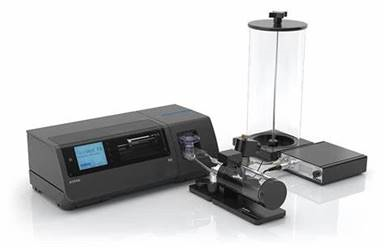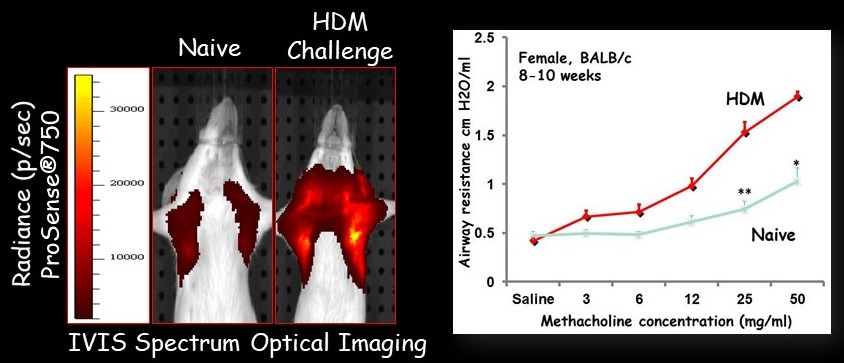
Throughout 2024-2025, Research Manitoba celebrates our 10th anniversary year. As we mark this achievement, we will be looking back at some of our past funded researchers to highlight their success.
Researcher: Dr. Aruni Jha
Institution: University of Manitoba
Grant received: Health Research PhD Award (co-funded with Manitoba Institute for Child Health, now known as Children’s Hospital Research Institute of Manitoba)
Year: 2014
Amount Received: $17,850
Project Title: Effects of Statins and Rho Kinase Inhibitors on Airway Inflamation, Responsiveness, and Remodeling in Murine Model of Allergic Asthma
Dr. Aruni Jha is a distinguished researcher currently working at AstraZeneca in Maryland, USA. His dedication to improving care for lung conditions, especially in children, has led him to this esteemed role. Research Manitoba is proud to have played a part in Dr. Jha’s journey by funding his PhD research.
This week also marks the 20th anniversary of Child Health Research Days, running from October 22 to 24, 2024. Organized by the Children’s Hospital Research Institute of Manitoba, the event highlights influential researchers from across the province.
On October 24, 2024, Jennifer Cleary, CEO of Research Manitoba, presented Dr. Jha with the Distinguished Alumni Award at the Child Health Research Days Awards Night (featured right).

The Long Game: University of Manitoba researcher, Aruni Jha, has shown how statins could potentially be used to help treat asthma – a development that may one day lead to new therapies for the chronic lung condition
Profile written by: Brian Cole
In the fall of 2010, Aruni Jha was at home in India contemplating the next step in his academic career when a friend told him about a potential opportunity in Canada.
Andrew Halayko, a professor at the University of Manitoba and a Canada Research Chair in Lung Pathobiology and Treatment, was looking for a PhD student to help with a study into whether a certain category of drugs known as statins could be used to treat asthma, a chronic lung condition that affects more than three million Canadians.
Jha, who was then 31, thought he might be a good fit for the position. Not only did he already have his master’s degree in pharmacology from JSS College of Pharmacy in his home country, but, as a person living with asthma, he also had a personal interest in the subject matter.
“If you go back to my master’s (degree), I specifically chose a project related to asthma and the interest kind of persisted in me,” he says. “And this was an exciting project.”
Jha followed up on his friend’s suggestion and contacted Halayko to discuss the possibility of joining his team, which has about eight researchers dedicated to better understanding the causes of asthma and how the condition can be treated.
After some discussion, Halayko decided to take Jha on in 2011, and by the following year, he was heading up an investigation into whether a member of the statin family of drugs called simvastatin could be effective in treating patients with asthma.
Little did either of them know at the time that the study, supported in part by Research Manitoba and the Children’s Hospital Research Institute of Manitoba, would eventually open the door to the development of a potential asthma treatment.
Dr. Aruni Jha (left) and Dr. Andrew Halayko collaborated on new asthma treatments at the University of Manitoba

But first, some background.
As Jha explains, the rationale for his initial project back in 2011 was pretty straightforward.
In addition to reducing cholesterol, a fatty substance produced by the body which tends to gum up the arteries under certain
circumstances, statins have also been known to reduce inflammation, a condition which can contribute to certain health conditions, including asthma.Yet research into the use of statins to treat asthma up until that point had proven to be inconclusive.
“The results were on and off,” says Jha. “Some (researchers) would show some benefit, but when you (administered the drug in a clinical setting) you didn’t see the benefits.”
Indeed, Jha’s first paper on simvastatins, based on tests on lab mice, confirmed that the drug offered no benefits. However, he was not ready to give up on the drug just yet.
The SCIREQ flexiVent is a specialized, advanced system used primarily in research for the precise measurement of lung mechanics in animal models, such as mice or rats. It’s designed for researchers studying respiratory physiology, lung diseases (like asthma, COPD), or the effects of drugs on the respiratory system. Dr. Jha used this device regularly to accurately measure the effects of his research on lab mice.

As he points out, all the studies until 2012 had been testing statins administered “systemically,” that is to say the drugs were injected into the bloodstream.
But Jha wondered whether the problem wasn’t the drug, but how it was being administered.
“We were brainstorming… and I said, ‘Andrew (Halayko), how do we know the drug is reaching the lungs?’ That’s when we decided that instead of going systemically, we could go intra-nasal (through the nose),” says Jha.
In theory, there were two main potential advantages to this approach. First, it ensured the drug entered the lungs directly. Second, it allowed for the drug to be administered at a lower dosage, which meant it would be safer.
“Instead of exposing (the whole body) to a humongous amount of statins, we went through the more local route, and we were able to reduce the dose of statins by almost 7,000 fold,” says Jha.
The result?
“We were able to show that simvastatin provided the benefits in mice that an asthmatic would expect from their medicine,” says Jha. “So, we reduced/ reversed inflammation, and structural changes in lungs due to asthma and we also…improved overall lung function (ease of breathing).”
The research also showed that simvastatin was effective when used alone or in conjunction with inhaled steroids. And if you combined the two, “you could achieve the desired effect at a much lower concentration of both inhaled simvastatin and steroids,” says Jha.
This is important because although asthma can usually be treated quite well with steroid-based inhalers, they are not always the solution in every case.
“The problem is if you can’t control asthma (with steroids used in an inhaler), you have to move on to things like oral steroids, which (over a lifetime) could lead to many issues, including (stunted) bone growth and behavioural issues,” says Halayko. Simply put, he says, “Taking steroids for your entire life is not a good thing.”
But, says Halayko, Jha’s research indicated there may be a way to bypass the problem. By combining a statin with a steroid, “The kid facing a lifetime of high dose steroid therapy is still probably going to take steroids, but it is going to be at a very low dose and it’s only going to be when it is needed… so all the adverse side-effects could be sidestepped.”
Why was intra-nasal injection of the drug more effective than the systemic approach?
As Jha explains, a statin metabolized in the bloodstream tends to end up in the liver where it works to reduce cholesterol but doesn’t make it to the lungs where it might be able to reduce the inflammation associated with asthma.

“When you go through the internal route, you can reduce the dose, you can localize the concentration of (the) statin… and you can improve overall lung health.” – Dr. Aruni Jha
As it turns out, Jha was the first researcher in the world to show that a statin could be effectively used this way. Indeed, not only did Jha demonstrate that a statin could reduce inflammation, but he also showed it could reverse the effects of oxidative stress, a process triggered by environmental allergens that can cause lungs to become more sensitive to asthma attacks and other diseases, like chronic obstructive pulmonary disease (COPD).
Yet despite Jha’s findings, pharmaceutical companies weren’t exactly rushing to commercialize his discovery back in 2018, largely due to intellectual property issues. As a result, Jha completed his PhD and moved on to work in the private sector, eventually taking a position as a clinical pharmacologist with Astra-Zeneca in the United States.
Fortunately, the story doesn’t end with Jha’s departure. Halayko has continued to build on Jha’s work with the help of other PhD student researchers who have followed in his footsteps.
“His findings have led to what is now the main pillar of my ongoing research program,” says Halayko, adding that he is now working with a pharmaceutical company that is open to developing a new asthma therapy based on the lab’s work.
“The initial results look promising,” he says.
Brian Cole is a Winnipeg writer.

Dr. Aruni Jha
Dr. Jha graduated from the University of Manitoba with a Ph.D. in Physiology and Pathophysiology. He holds a master’s degree in Pharmacology and an undergraduate degree in Pharmacy from India. In his previous role with Emergent BioSolutions, he led the non-clinical development of COVID-19 antibody products.
Currently, he works for AstraZeneca as Associate Director in the Clinical Pharmacology and Quantitative Pharmacology Division. Outside of work, he enjoys working out, spending time with his daughters, photography, and cooking.

